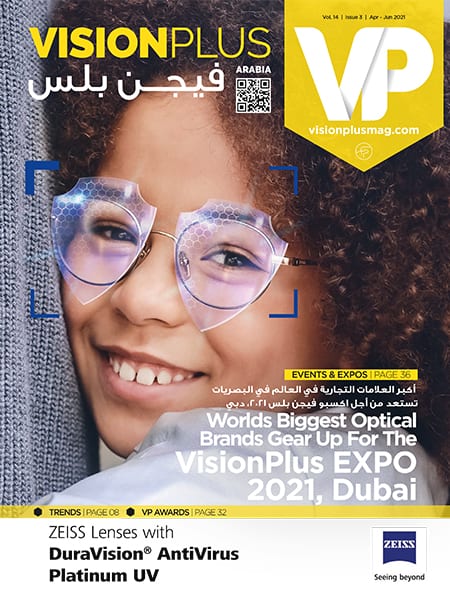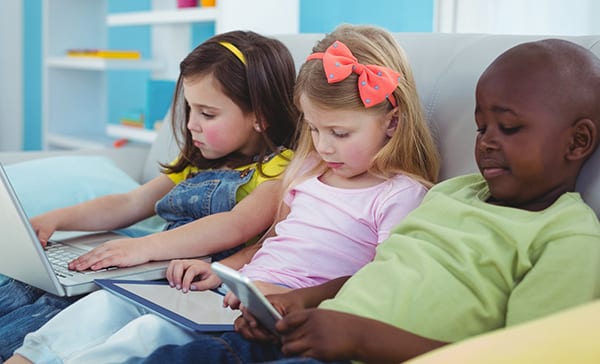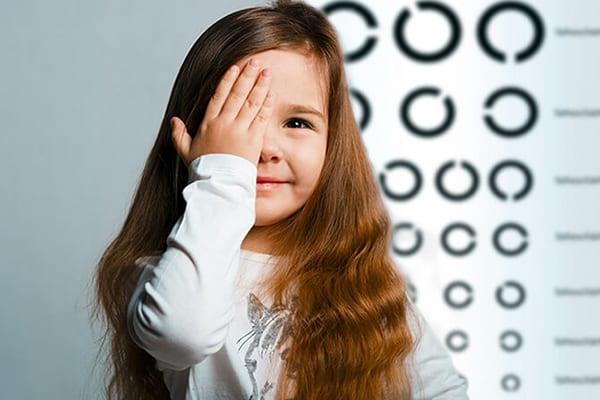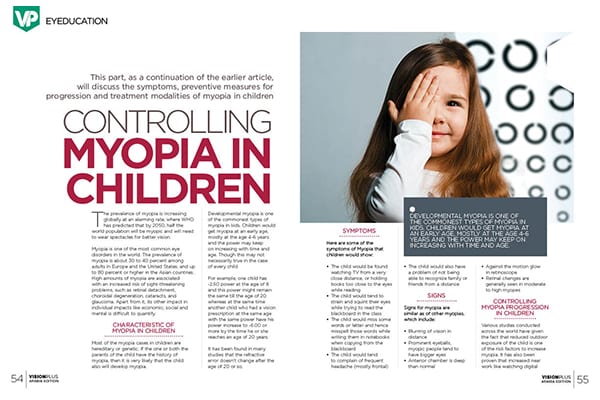This post is also available in:
![]() العربية
العربية

Controlling Myopia In Children
This part, as a continuation of the earlier article, will discuss the symptoms, preventive measures for progression and treatment modalities of myopia in children
The prevalence of myopia is increasing globally at an alarming rate, where WHO has predicted that by 2050, half the world population will be myopic and will need to wear spectacles for better vision.
Myopia is one of the most common eye disorders in the world. The prevalence of myopia is about 30 to 40 percent among adults in Europe and the United States, and up to 80 percent or higher in the Asian countries. High amounts of myopia are associated with an increased risk of sight-threatening problems, such as retinal detachment, choroidal degeneration, cataracts, and glaucoma. Apart from it, its other impact in individual impacts like economic, social and mental is difficult to quantify.
Characteristic Of Myopia In Children
Most of the myopia cases in children are hereditary or genetic. If the one or both the parents of the child have the history of myopia, then it is very likely that the child
also will develop myopia.
Developmental myopia is one of the commonest types of myopia in kids. Children would get myopia at an early age, mostly at the age 4-6 years and the power may keep on increasing with time and age. Though this may not necessarily true in the case
of every child.
For example, one child has -2.50 power at the age of 8 and this power might remain the same till the age of 20 whereas at the same time another child who had a vision prescription at the same age with the same power have his power increase to -6.00 or more by the time he or she reaches an age of 20 years.
It has been found in many studies that the refractive error doesn’t change after the age of 20 or so.
Symptoms
- Here are some of the symptoms of Myopia that children would show:
- The child would be found watching TV from a very close distance, or holding books too close to the eyes while reading
- The child would tend to strain and squint their eyes while trying to read the blackboard in the class
- The child would miss some words or letter and hence misspell those words while writing them in notebooks when copying from the blackboard
- The child would tend to complain of frequent headache (mostly frontal)
- The child would also have a problem of not being able to recognize family or friends from a distan
Signs
Signs for myopia are similar as of other myopias, which include:
- Blurring of vision in distance
- Prominent eyeballs,
myopic people tend to have bigger eyes - Anterior chamber is deep than normal
- Against the motion glow
in retinoscope - Retinal changes are generally seen in moderate to high myopes
Controlling Myopia Progression In Children
Various studies conducted across the world have given the fact that reduced outdoor exposure of the child is one of the risk factors to increase myopia. It has also been proven that increased near work like watching digital devices like mobiles, tablets or laptops for a prolonged period increases myopia. It is more significant now because of the pandemic as all most of the education these days uses online tools with digital devices and is conducted indoors.
Recently, Indian experts of optometry in association with various optometry associations across the country published a white paper in Myopia Management based on consolidated evidence from different research, experience and indications.

The major points of the publications were:
- A compulsory 60 min break outdoor in all schools in India. This will help increase exposure to sunlight.
- In case of online education, 15 minute breaks to be taken between sessions.
- Reduce assignments and near work for pre-school children and learning needs to be more activity based.
- Awareness at parent and teacher level regarding myopia and the ill effects of myopia
- Regular eye screening for school children
Treatment Of Myopia In Children
Treatment modalities are slightly different when it comes to children. Though optical correction of using spectacles glasses with concave lens tops the list, we will discuss some more modalities followed in India and abroad.
Optical Correction (As discussed in earlier chapter)
- Single vision spectacle correction is the cheapest, easiest and widest remedy for myopia.
- Bifocal or Multifocal/progressive spectacle is also a proven therapy for myopia control
- Orthokeratology Contact Lens is a type of contact lens which is proven to halt myopia progression. This is however practiced only in some cities in India
- Soft Multifocal Lens has also been seen as beneficial for control of myopia progression
Pharmaceutical Agents
Atropine Sulphate (0.01%) has also been proven beneficial to halt the progression of myopia and been effectively used by Optometrist & Ophthalmologist across the world to slow down the further increment of myopia. Since use of Atropine will cause transient loss of accommodation, progressive glasses are prescribed along with these drops.
Although the familiarity about myopia has increased significantly between the parents and children, myopia needs to be closely monitored and analysed based on comparisons of progression during short intervals. The main aim for controlling myopia is to protect the child's eyes from deteriorating thus reducing chances from vision threatening diseases mentioned above like Retinal Detachment, Glaucoma, Choroidal Degeneration and so on.







